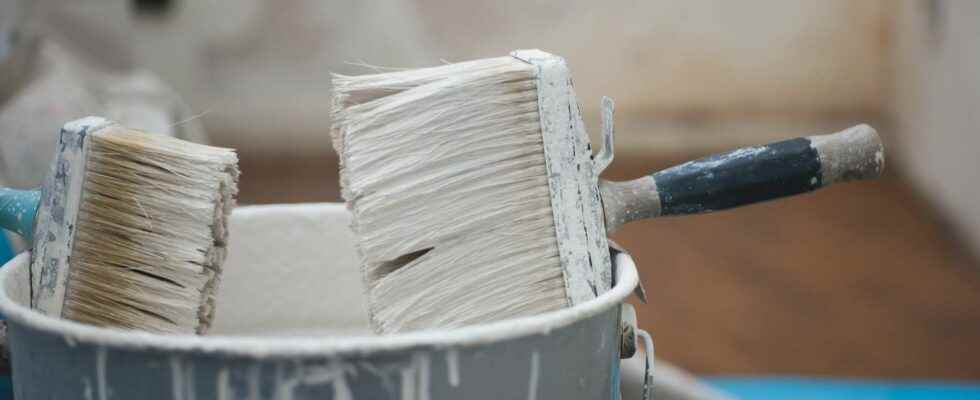Used for centuries, whitewash is an ancestral “paint” used to cover the interior and exterior walls of a house. It is a natural and healthy coating which, as a bonus, lets the walls breathe while evacuating humidity.
The base of whitewash is lime. This mineral powder is the result of cooking stones limestone at high temperature, i.e. between 900°C and 1,200°C. At the end of this process, the fired stones transformed into lime are reduced to powder to be used in the building sector (mortargaskets) and the decoration (paint, coating, whitewash).
What is a whitewash?
Whitewash, also called “lime paint”, is an elaborate mixture of water, lime powder or paste and natural pigments or colored oxides. It can be made or purchased ready-made. It is applied using a wide brush or a whitewash brush. The whitewash recipe may differ, in particular depending on the desired rendering. For example, adding black soap will make it easier to apply, less permeable to water, with a slightly more satiny effect. Add the whitewash of saltalumoflinseed oil or gum arabic will fix the pigments and promote the setting of the lime.
What are the advantages of using whitewash for your walls?
Limewash is a painting which does not require the intervention of a professional, which generates a significant economic advantage. It can be applied to a multitude of supports: stone, brick, plaster, cement. Thicker than paint, it covers some small defects present on the walls like small cracks.
Naturally controlling the humidity present in the walls, the whitewash can act on the thermal comfort of a home since heating needs will be reduced.
This coating is environmentally friendly. Indeed it is, a priori, prepared without chemical substances, but with natural ingredients. It is also healthy because devoid of volatile organic agents.
You will also be interested
Interested in what you just read?
